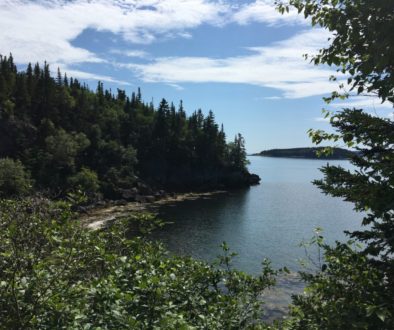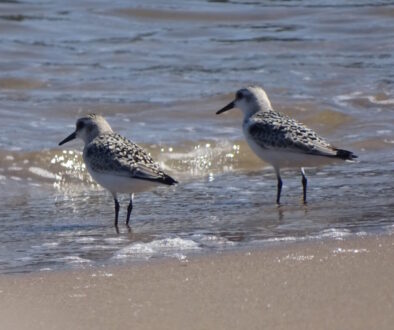New Brunswick lagging behind other parts of Canada on wilderness protection: CPAWS report
Fredericton – In its latest annual report released in advance of Canada Parks Day, the Canadian Parks and Wilderness Society (CPAWS) is calling Canada out for falling behind most other countries in protecting its land and fresh water. CPAWS’ 2015 report, Protecting Canada: Is it in our nature?, assesses whether our governments are on track to meet their collective international commitment to protect at least 17 percent of our land and fresh water by 2020, and to improve the quality of our protected areas.
“Based on our assessment of progress since Canada endorsed the UN Convention on Biological Diversity 10-year plan in 2010, it would take us 50 years from today, not five, to meet our commitment to protect at least 17 percent of our land and fresh water. And 17 percent is only the next step we need to take towards protecting at least half to ensure Canada continues to have healthy, functioning ecosystems,” says Alison Woodley, national director of CPAWS’ parks program.
“In New Brunswick, we are particularly worried that New Brunswick is so far behind most of the other provinces in Canada, there is no plan in place to catch up, and no commitment to add any new protected areas,” says Roberta Clowater, Executive Director of CPAWS New Brunswick.
“Furthermore, the opportunities for creating more protected areas in the future are quickly being foreclosed due to the province’s new Crown Forestry strategy. There will be fewer and fewer wild forest options left to add to the protected areas systems over time.”
Slow to no progress since 2011
CPAWS found that the current percentage of lands and inland waters protected varies dramatically across Canada, ranging from just under three percent in Prince Edward Island, to more than 15 percent in British Columbia. Since 2011, the area protected in Alberta, Newfoundland and Labrador and the Yukon Territory has not grown at all, and all other provinces have increased protection by less than 2 percent. B.C.’s progress is undermined by its 2014 Parks Act amendments that allow industrial research in parks and boundary changes to accommodate pipelines and logging.
Reasons for optimism
“Some of Canada’s provinces and territories and Indigenous communities are making impressive efforts to advance protected areas. Quebec and Ontario have committed to protecting half of their northern territories, although implementation of these commitments is very slow. Nova Scotia has ramped up efforts and appears to be on track to reach 14 percent protection, Manitoba has committed to creating 15 new parks and protected areas and to expanding others, and Alberta, the Northwest Territories and Nunavut all have land use planning processes underway that could lead to new, large protected areas,” says Woodley.
At the federal level, a large new national park called Qausuittuq in Nunavut (11,000 km2) was just finalized in June, and two more could be announced within the next year. These include an area called Thaidene Nene around the East Arm of Great Slave Lake, NWT, where approximately 30,000 km2 could become a combined national and territorial park shortly. Similarly, the process for finalizing the 10,700 km2 Mealy Mountains National Park Reserve in Labrador is nearing completion, with an adjacent 3,000 km2 provincial park still at the early stages of establishment.
Local Indigenous communities are playing a significant leadership role and partnering with federal, provincial, and/or territorial governments to protect many of these large areas.
CPAWS calculates that if existing plans for creating new protected areas were implemented, along with other commitments for which specific sites have not yet been confirmed, Canada could meet its obligation to reach 17 percent protection by 2020.
Government leadership needed In New Brunswick
Over the past 20 years, New Brunswick has only moved from 1.3 percent to 4.7 percent of the province in permanently and legally designated protected areas.
“We’re looking for New Brunswick to take on leadership to help meet Canada’s 2020 protected area commitments. To start, the New Brunswick government needs to revise the Crown Forestry Strategy to allow space for new forested protected areas across the province, and needs to commit to an ambitious plan to establish new protected areas around ecologically important forests, coastal shores, cliffs, wetlands and river headwaters. We cannot maintain the current slow pace of protection, because we are losing opportunities to protect our wild nature at an even faster rate,” says Roberta Clowater.
-30-
View executive summary and full report at: http://cpaws.org/
For interviews, contact: Roberta Clowater, rclowater@cpaws.org; phone: 506-452-9902
Founded in 1963, CPAWS is Canada’s only nationwide charity dedicated solely to protecting our public land and water, and ensuring our parks are managed to protect the nature within.


